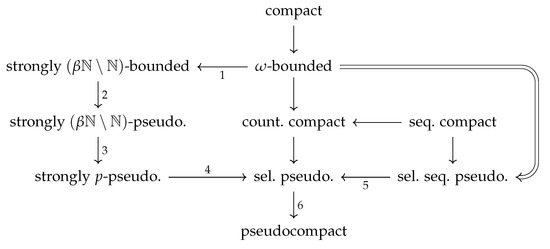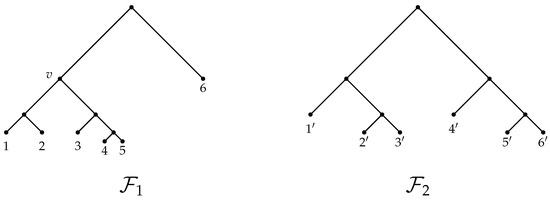Topological Groups (Closed)
A topical collection in Axioms (ISSN 2075-1680). This collection belongs to the section "Geometry and Topology".
Viewed by 77148Editor
2. Department of Mathematical and Physical Sciences, La Trobe University, Melbourne, VIC 3086, Australia
Interests: topological groups; especially locally compact groups; pro-Lie groups; topological algebra; topological vector spaces; Banach spaces; topology; group theory; functional analysis; universal algebra; transcendental number theory; numerical geometry; history of mathematics; information technology security; health informatics; international education; university education; online education; social media in the teaching of mathematics; stock market prediction; managing scholarly journals
Special Issues, Collections and Topics in MDPI journals
Topical Collection Information
Dear Colleagues,
For over a century, topological groups have been an active area of research. In 1900, David Hilbert presented a seminal address to the International Congress of Mathematician, in which he formulated 23 problems that influenced a vast amount of research of the 20th century. The fifth of these problems, Hilbert5, asked whether every locally euclidean topological group admits a Lie group structure and this motivated an enormous effort on locally compact groups. It culminated in the work of Gleason, Iwasawa, Montgomery, Yamabe, and Zippin, yielding a positive answer to Hilbert5 and important structure theory of locally compact groups. Later, Jean Dieudonné quipped that Lie groups had moved to the centre of mathematics and that one cannot undertake anything without them. A modern introduction to Lie Groups is given in the book by Hilgert and Neeb. Recently there has been much interest in infinite-dimensional Lie groups including significant publications by Glöckner and Neeb, and two books by Hofmann and Morris, which demonstrated the power of Lie Theory in describing the structure of compact groups and (almost) connected pro-Lie Groups. Advances in profinite group theory are described in books by Wilson and by Ribes and Zaleskii and on locally compact totally disconnected groups in the papers of Willis and collaborators. Over some decades the Moscow school led by Arhangel’skii produced many beautiful results on free topological groups and non-locally compact groups in general. The book “Topological Groups and Related Structures” by Arhangel’skii and Tkachenko contains many results about such groups. In the 1960s Morris initiated the study of the classes of topological groups he called Varieties of Topological Groups, and several others have contributed to their theory. There has also been much research on pseudocompact groups by Comfort and his collaborators.
In this Topical Collection on Topological Groups we seek to address all areas of topological group theory and related structures. Original articles reporting recent progress and survey articles are sought. Authors are encouraged to include interesting open questions. The deadline for submitting papers is 31 December 2019.
Prof. Dr. Sidney A. Morris
Collection Editor
Manuscript Submission Information
Manuscripts should be submitted online at www.mdpi.com by registering and logging in to this website. Once you are registered, click here to go to the submission form. Manuscripts can be submitted until the deadline. All submissions that pass pre-check are peer-reviewed. Accepted papers will be published continuously in the journal (as soon as accepted) and will be listed together on the collection website. Research articles, review articles as well as short communications are invited. For planned papers, a title and short abstract (about 100 words) can be sent to the Editorial Office for announcement on this website.
Submitted manuscripts should not have been published previously, nor be under consideration for publication elsewhere (except conference proceedings papers). All manuscripts are thoroughly refereed through a single-blind peer-review process. A guide for authors and other relevant information for submission of manuscripts is available on the Instructions for Authors page. Axioms is an international peer-reviewed open access monthly journal published by MDPI.
Please visit the Instructions for Authors page before submitting a manuscript. The Article Processing Charge (APC) for publication in this open access journal is 2400 CHF (Swiss Francs). Submitted papers should be well formatted and use good English. Authors may use MDPI's English editing service prior to publication or during author revisions.
Keywords
- topological groups
- compact groups
- profinite groups
- locally compact groups
- Lie groups
- actions by Lie groups
- pro-Lie groups
- almost periodic
- semitopological groups
- paratopological groups
- structure theory
- characterizing subgroups
- transformation groups
- representations
- free topological groups, free Boolean topological groups and free products
- variety of topological groups
- Hilbert’s 5th problem
- (locally) minimal topological groups
- compactness conditions in topological groups
- pseudocompact groups
- duality and reflexivity
- covering theory for topological groups
- suitable sets for topological groups
- algebraic topology and topological groups
- compact semigroups
Related Special Issues
- Topological Groups: Yesterday, Today, Tomorrow in Axioms (10 articles - displayed below)
- Topological Algebra in Axioms (4 articles - displayed below)







